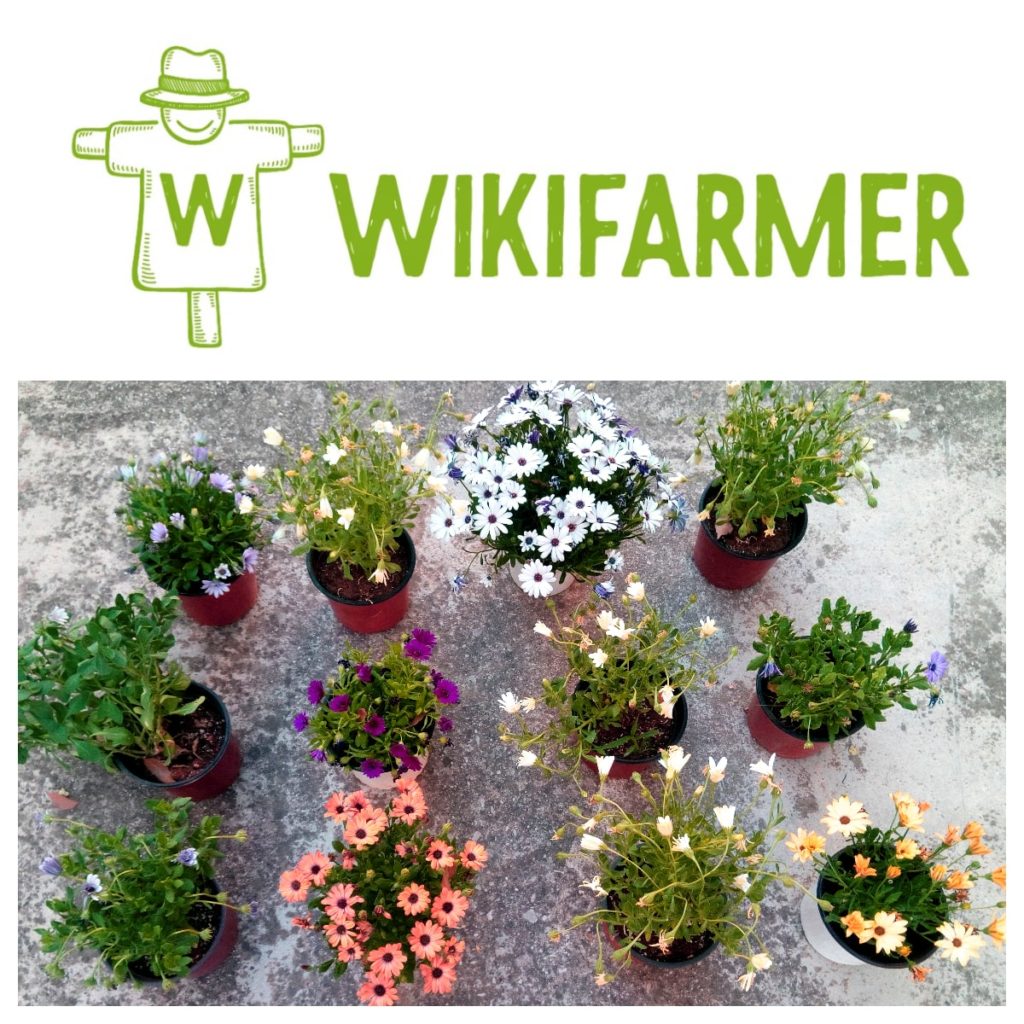Dimorphotheca

This post is also available in:
This post is also available in:
![]() Español (Spanish)
Español (Spanish) ![]() Français (French)
Français (French) ![]() Deutsch (German)
Deutsch (German) ![]() Nederlands (Dutch)
Nederlands (Dutch) ![]() हिन्दी (Hindi)
हिन्दी (Hindi) ![]() العربية (Arabic)
العربية (Arabic) ![]() 简体中文 (Chinese (Simplified))
简体中文 (Chinese (Simplified)) ![]() Italiano (Italian)
Italiano (Italian) ![]() 한국어 (Korean)
한국어 (Korean)
People are usually wondering if there is a flowering plant that can easily grow in pots, with minimum care and watering, but at the same time, can produce colorful flowers from spring to autumn and lasts for more than a year. Τhe first thing that comes to mind and satisfies all these conditions is the well-known dimorphotheca. We also know dimorphotheca with the common names “colorful daisy” or “African daisy.” This resemblance with daisies is because both plants belong to the same family (Asteraceae) and come from South Africa.
Dimorphotheca is genuinely an impressive plant that produces bright flowers in a wide variety of colors. Most species of dimorphotheca are perennials, but in most cases, the quality of the produced flowers drops after the fourth or fifth year of their life. Therefore, lovers of dimorphotheca replant at this time. In countries or regions with mild weather conditions, dimorphotheca can produce beautiful flowers from early spring to mid-autumn.
This rich and colorful blooming does not come at a high price since 12 small plants cost around 20 dollars. Except for the variety in color, we observe diversification in the structure of the plants, with some being more erect than others.
 We first need to transplant the dimorphothecainto larger pots, ideally made from terracotta. Unlike plastic, this material has pores and helps decrease excessive soil moisture that can be harmful to our plants. Regardless of its material, we need to open holes at the bottom of the pot allowing drainage of the extra water within minutes.
We first need to transplant the dimorphothecainto larger pots, ideally made from terracotta. Unlike plastic, this material has pores and helps decrease excessive soil moisture that can be harmful to our plants. Regardless of its material, we need to open holes at the bottom of the pot allowing drainage of the extra water within minutes.
Dimorphotheca grows in well-drained sandy soils and sunny places. It is partially drought and heat tolerant but does not like high humidity. We must avoid watering from above. The canopy of the plant (flowers, leaves, and shoots) must stay dry. It seems that the plant is ideal for growing into pots, offering us the possibility to move it around during the year, even put it indoors for a few days, to protect it from the frost. Growing in pots reduces the competition with weeds for water, nutrients, and access to sunlight.
 Immediately after transplanting our plants to their new pots, we need to remove any withered flowers by cutting the stem that holds them from the first node (branching point). This process is necessary, as it helps the plant devote all its energy, nutrients, and water to forming young buds that will surprise us very soon with their appearance, vigorousness, and colors. In addition, we need to remove shoots with brown and wilting leaves. To keep our plants fresh and bloom for longer, we need to perform such pruning for the next 2-3 years. This activity can be done any time of the year and more frequently from spring to autumn.
Immediately after transplanting our plants to their new pots, we need to remove any withered flowers by cutting the stem that holds them from the first node (branching point). This process is necessary, as it helps the plant devote all its energy, nutrients, and water to forming young buds that will surprise us very soon with their appearance, vigorousness, and colors. In addition, we need to remove shoots with brown and wilting leaves. To keep our plants fresh and bloom for longer, we need to perform such pruning for the next 2-3 years. This activity can be done any time of the year and more frequently from spring to autumn.
Pinching and Deadheading of Dimorphotheca
The more we prune our plants, the more they will grow and generate new shoots and flowers. The life purpose of any plant is reproduction, which in many cases happens through the formation of seeds. Similarly, dimorphotheca plants are genetically programmed to produce seeds at a particular stage of their biological cycle. However, if we allow flowers to produce seeds, the plants will devote all their energy to the seed production process and thus will stop blooming.
Therefore, if we want to extend the flowering period of our plants, we must remove any part of the plant that contains immature seeds. This process is called pinching, and most gardeners perform these two procedures (pinching and deadheading) simultaneously. The pruning shears we will use during the deadheading must be of high quality and accompanied by the corresponding certificates.
Fertilization of Dimorphotheca
When dimorphotheca grows in pots, we need to supply the plant with essential nutrients by using a liquid fertilizer about once a month, from Spring to the start of Autumn. Proper fertilization will help the plant produce well-formed, fresh, and colorful flowers.
We must pay attention to the content of phosphorus in the fertilizer, which should be greater than or equal to the other two elements (N-P-K 5-10-10 or 6-10-4). We can find the exact dosage of each fertilizer reported by the manufacturer on the product’s label. In most cases, we can add three caps to a 3-liter watering can. This quantity is enough for irrigating five pots or two larger flower boxes (jardinieres).
Dimorphotheca’s Water Requirements – Irrigation Of Dimorphotheca
Since we have placed the pots with our dimorphotheca plants in a spot with direct access to sunlight for at least 6 hours a day, we may need to water every day, especially in summer when the temperature rises. During the rest of the year (spring and autumn), watering frequency varies from 1 to 3 times per week. It is suggested to water in the morning directly on the soil and roots of the plants to avoid wetting any green tissue (shoots, leaves).
 Preparing Dimorphotheca for the winter
Preparing Dimorphotheca for the winter
When the temperature starts dropping in mid to late autumn (October-November) and depending on the region and the weather conditions, we try to reduce the size of the plant’s canopy by pruning. If the weather forecast predicts frost, it is recommended to transfer our plants to a protected spot, where the temperature does not drop below zero.
During winter, we need to water about once or twice every two weeks. Next spring, we can cut any dried plant parts by pruning, digging (fluffy) the soil around the root, and adding extra soil if needed. From that point after, whenever there is a withered flower, we must remove it to enhance flowering. In conclusion, we understand that a few simple moves are enough to help our dimorphothecas thrive, filling our balcony with colors that inspire us and put us in a better mood.








































































